

Our Courses

Internet of Things V2: DragonBoard™ bring up and community ecosystem
Do you want to develop skills to prototype embedded products using state-of-the-art technologies? In this course you will build a hardware and software development environment to guide your journey through the Internet of Things specialization courses. We will use the DragonBoard™ 410c single board computer (SBC). This is the first in a series of courses where you will learn both the theory and get the hands-on development practice needed to prototype Internet of Things products. This course is suitable for a broad range of learners.
-
Course by

-
 Self Paced
Self Paced
-
 English
English

Mastering Ansible Automation
Learn the essentials to quickly master automation with Ansible! While this course is designed for learners with limited coding experience, it is helpful (though not required!) to have familiarity with Linux or Unix-like operating systems, the command line interface, and the basics of shell scripting. To allow for a truly hands-on, self-paced learning experience, this course is video-free. Assignments contain short explanations with images and runnable code examples with suggested edits to explore code examples further, building a deeper understanding by doing.
-
Course by

-
 Self Paced
Self Paced
-
 11 hours
11 hours
-
 English
English
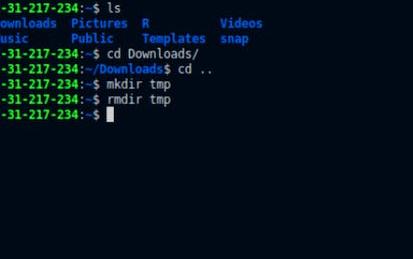
Command Line in Linux
Linux is a popular operating system that is based on the Unix operating system. It has many distributions which have different interfaces for installing software, different user interfaces, and so on. One thing all of the ‘distros’ have in common is that they all have a command line interface, or terminal. In fact, sometimes there is no user interface except the terminal itself. A Linux server running a web application on AWS, for example, may only contain the software required to run the application, and no GUI ‘window’ system at all.
-
Course by

-
 Self Paced
Self Paced
-
 3 hours
3 hours
-
 English
English

Using Git for Distributed Development
Course 4 focuses on using git for open source software distributed development. Git is a revision control system which arose out of the Linux kernel development community. Git was designed to help developers spread across the globe working on complicated projects coordinate their work in a rational way and keep track of everything they were doing. Overtime, Git has grown to be used by millions of projects today. This course gives you the opportunity to learn how to use git efficiently and make contributions in a relatively short amount of time.
-
Course by

-
 Self Paced
Self Paced
-
 22 hours
22 hours
-
 English
English

Cloud Computing Foundations
Welcome to the first course in the Building Cloud Computing Solutions at Scale Specialization! In this course, you will learn how to build foundational Cloud computing infrastructure, including websites involving serverless technology and virtual machines. You will also learn how to apply Agile software development techniques to projects which will be useful in building portfolio projects and global-scale Cloud infrastructures. This course is ideal for beginners as well as intermediate students interested in applying Cloud computing to data science, machine learning and data engineering.
-
Course by

-
 Self Paced
Self Paced
-
 19 hours
19 hours
-
 English
English

Internet of Things: Setting Up Your DragonBoard™ Development Platform
Do you want to develop skills to prototype mobile-enabled products using state-of-the-art technologies? In this course you will build a hardware and software development environment to guide your journey through the Internet of Things specialization courses. We will use the DragonBoard™ 410c single board computer (SBC). This is the first in a series of courses where you will learn both the theory and get the hands-on development practice needed to prototype Internet of Things products. This course is suitable for a broad range of learners.
-
Course by

-
 Self Paced
Self Paced
-
 English
English
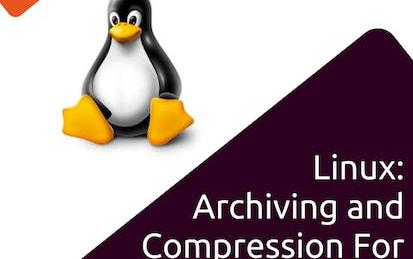
Linux: Archiving and Compression for DevOps (tar/gzip)
In this 1-hour long project-based course on Linux: Archiving and Compression for DevOps you will be working entirely on the command line and using powerful Linux commands using tar and various compression commands such as gzip and bzip2 to learn how file archiving and compression works in Linux.
-
Course by

-
 Self Paced
Self Paced
-
 3 hours
3 hours
-
 English
English

Command Line Basics in Linux
In this one-hour, project-based course, you'll learn your first commands for the Linux command-line.
-
Course by

-
 Self Paced
Self Paced
-
 3 hours
3 hours
-
 English
English

Linux Fundamentals
This course dives deep into the world of Linux, beginning with an introduction to its structure and how to run it on different operating systems. From setting up a Linux container with Docker to understanding the command-line interface, learners quickly get comfortable navigating a Linux environment.
-
Course by

-
 Self Paced
Self Paced
-
 18 hours
18 hours
-
 English
English

Threat Analysis
If you are an associate-level cybersecurity analyst who is working in security operation centers, this course will help you understand Incident Analysis in a Threat-Centric SOC.
-
Course by

-
 Self Paced
Self Paced
-
 27 hours
27 hours
-
 English
English

Linux and Bash for Data Engineering
In this second course of the Python, Bash and SQL Essentials for Data Engineering Specialization, you will learn the fundamentals of Linux necessary to perform data engineering tasks. Additionally, you will explore how to use both Bash and zsh configurations, and develop the syntax needed to interact and control Linux. These skills will allow you to manage and manipulate databases in a Bash environment.
-
Course by

-
 Self Paced
Self Paced
-
 22 hours
22 hours
-
 English
English

C Programming: Advanced Data Types - 5
In this course you will define your own data types in C, and use the newly created types to more efficiently store and process your data. Many programming languages provide a number of built-in data types to store things such as integers, decimals, and characters in variables, but what if you wanted to store more complex data? Defining your own data types in C allows you to more efficiently store and process data such as a customer's name, age and other relevant data, all in one single variable!
-
Course by

-
 Self Paced
Self Paced
-
 8 hours
8 hours
-
 English
English

Threat Investigation
If you are an associate-level cybersecurity analyst who is working in security operation centers, this course will help you understand how threat-centric SOC must prepare for analyzing new and emerging threats by implementing robust security investigation procedures • By the end of the course, you will be able to: • Understand cyber-threat hunting concepts • Describe the five hunting maturity levels (HM0–HM4) • Describe the hunting cycle four-stage loop• Describe the use of the Common Vulnerability Scoring System (CVSS) and list the CVSS v3.0 base metrics• Describe the CVSS v3.0 scoring compon
-
Course by

-
 Self Paced
Self Paced
-
 9 hours
9 hours
-
 English
English

Endpoints and Systems
The three most used endpoint operating systems are Windows, Linux, and Mac. When investigating security incidents, security analysts often encounter these operating systems running on servers or user end hosts. If you are an associate-level cybersecurity analyst who is working in security operation centers, this course will help you understand basic Windows operations principles.
-
Course by

-
 Self Paced
Self Paced
-
 25 hours
25 hours
-
 English
English

Getting Started with Ubuntu Linux
In this one-hour, project-based course, you'll be introduced to the diverse tree of Linux distributions and explore a version of Ubuntu, called "Xubuntu.
-
Course by

-
 Self Paced
Self Paced
-
 3 hours
3 hours
-
 English
English
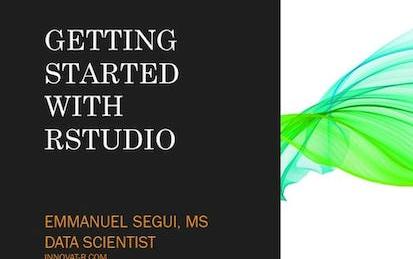
Getting Started with Rstudio
In this 1-hour long project-based course, you will learn everything you need to know to get started with RStudio IDE, including how to install RStudio onto your Windows, MAC or Linux machine, how to use RStudio Cloud, a lightweight, cloud-based version of RStudio, how to start creating R projects, install and load R packages, as well as display interactive maps, graphs and tables with 1 line of code. This course is perfect if you want to start learning R programming with RStudio: the Premiere IDE for R Note: This course works best for learners who are based in the North America region.
-
Course by

-
 Self Paced
Self Paced
-
 2 hours
2 hours
-
 English
English
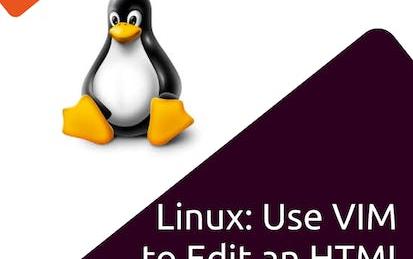
Linux: Use Vim to Edit an HTML Document
In this 1-hour long project-based course on Linux: Use Vim to Edit an HTML Document, you will be working entirely in the Bash shell and using powerful VIM commands to learn how we can fully work with files without the need of an IDE or text editor GUI.
-
Course by

-
 Self Paced
Self Paced
-
 3 hours
3 hours
-
 English
English
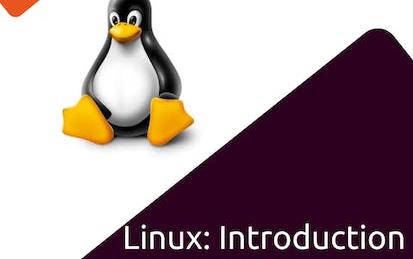
Linux: Introduction to Shell Scripting for DevOps
In this 1-hour long project-based course on Linux: Introduction to Shell Scripting for DevOps, you will be writing your own Bash/Shell scripts for scratch.You will be going through all of the key components that make up the bash script, from exit statuses, the test command, if/else statements, loops and file archiving.
-
Course by

-
 Self Paced
Self Paced
-
 3 hours
3 hours
-
 English
English

C Programming: Getting Started - 1
Start learning one of the most powerful and widely used programming languages: C. Within moments you will be coding hands-on in a browser tool that will provide instant feedback on your code. The C programming language is one of the most stable and popular programming languages in the world. It helps to power your smartphone, your car's navigation system, robots, drones, trains, and almost all electronic devices.
-
Course by

-
 Self Paced
Self Paced
-
 11 hours
11 hours
-
 English
English

Access an EC2 instance shell from the AWS console
In this 1-hour long project-based course, you will learn how to Access an EC2 instance shell from the AWS console Amazon Elastic Compute Cloud is the service you use to create and run virtual machines (VM), also known as instances. By completing the steps in this guided project, you will successfully launch a Linux VM on Amazon EC2 within the AWS Free Tier. You will also connect to the instance that you launch using the AWS management console and then deploy a web application using the AWS management console.
-
Course by

-
 Self Paced
Self Paced
-
 2 hours
2 hours
-
 English
English

Linux on LinuxONE
This course is for Linux Systems Administrators, Architects and Developers who are already familiar with Linux components and everyday tasks, but need a primer on how to best take advantage of the LinuxONE platform. This includes working with the hardware, software, facilities, and processes unique to LinuxONE. It is comprised of videos, links to online resources, and a final test for a badge.
-
Course by

-
 Self Paced
Self Paced
-
 2 hours
2 hours
-
 English
English

Web Development in Flask: Build Your First Website
This guided project, Web Development in Flask: Build Your First Website, will help an intermediate Python programmer who is looking to utilize Flask to create a website requiring user credentials.
-
Course by

-
 Self Paced
Self Paced
-
 3 hours
3 hours
-
 English
English
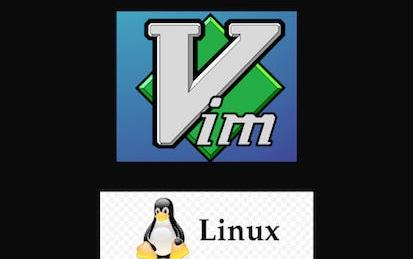
Text Editing in Linux
In this guided project, you will learn about editing text with Linux using Vim which is one of the oldest and most advanced text editors with Linux.
-
Course by

-
 Self Paced
Self Paced
-
 3 hours
3 hours
-
 English
English

Deploying Redis Enterprise for GKE and Serverless App on Anthos Bare Metal
This is a self-paced lab that takes place in the Google Cloud console. In this lab you will learn how to create Compute Engine VMs on Google Cloud with L2 connectivity through the use of vxlan built-in functionality in Linux. You'll be using the Compute Engine VMs to simulate Anthos on Bare Metal (BM) in high-availability mode which requires L2 connectivity. The deployment will consist of 4 VMs to deploy Anthos on BM, 1 x workstation, 1 x control plane nodes and 2 x worker nodes.
-
Course by

-
 Self Paced
Self Paced
-
 2 hours
2 hours
-
 English
English

Analyze Network Traffic with TCPDump
In this 1 hour guided project, you will learn how to use one of the most versatile Linux networking utilities tcpdump to capture and analyze TCP traffic.
-
Course by

-
 Self Paced
Self Paced
-
 2 hours
2 hours
-
 English
English



